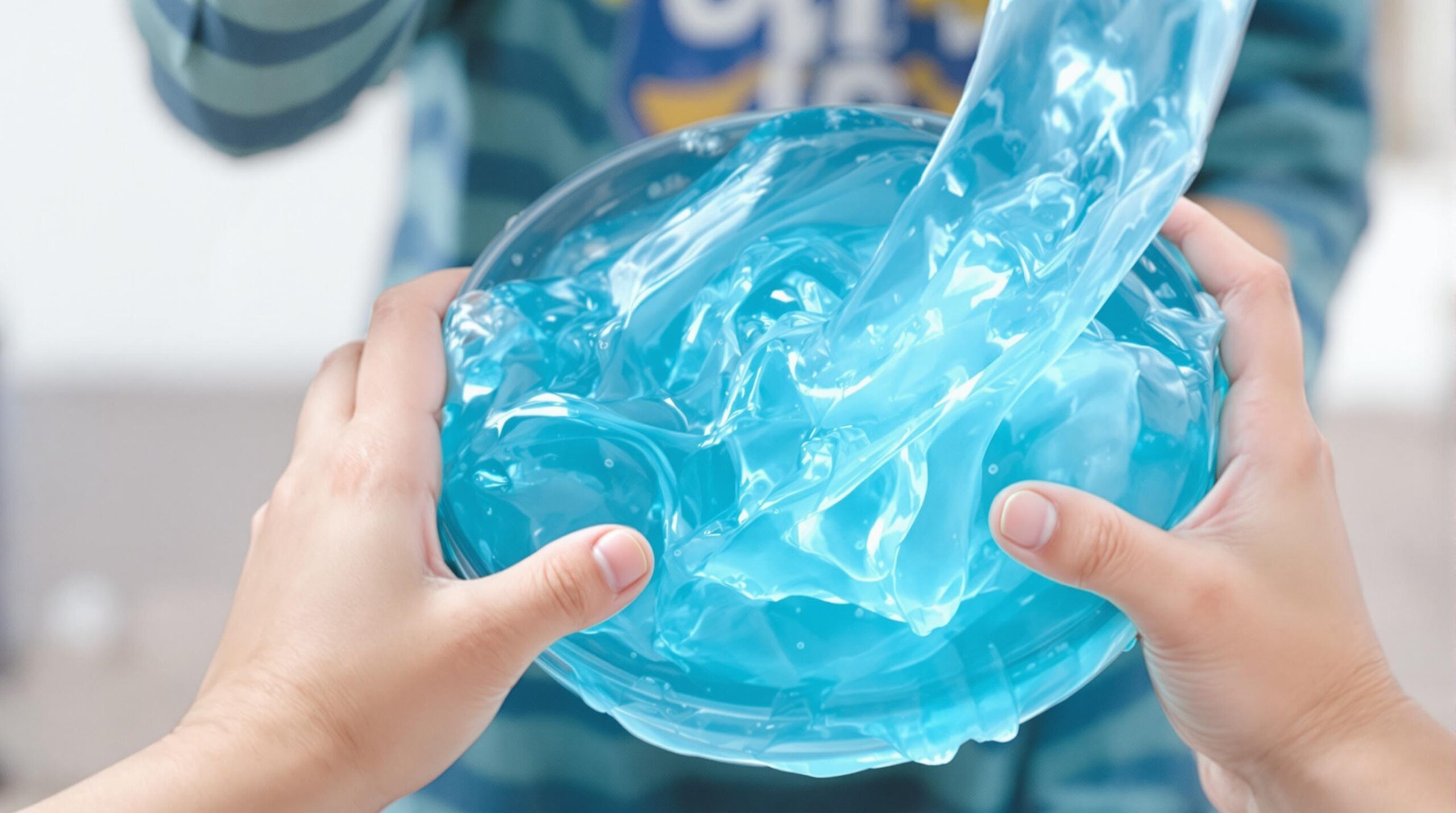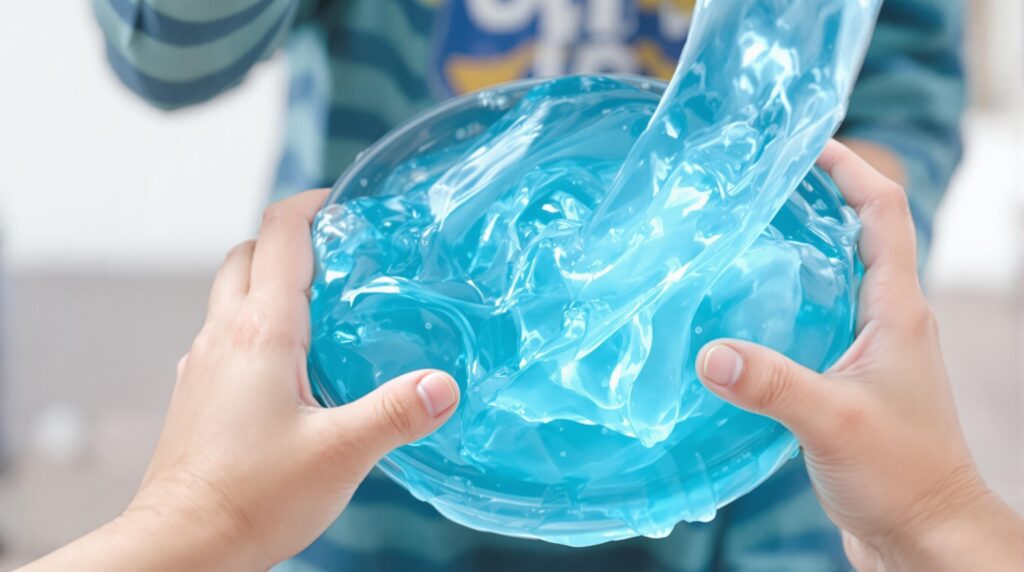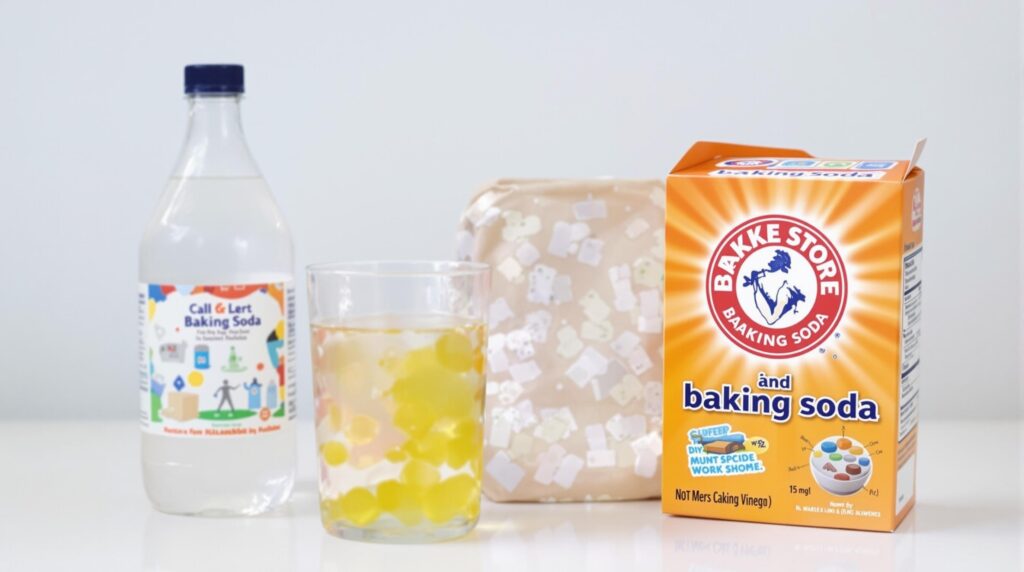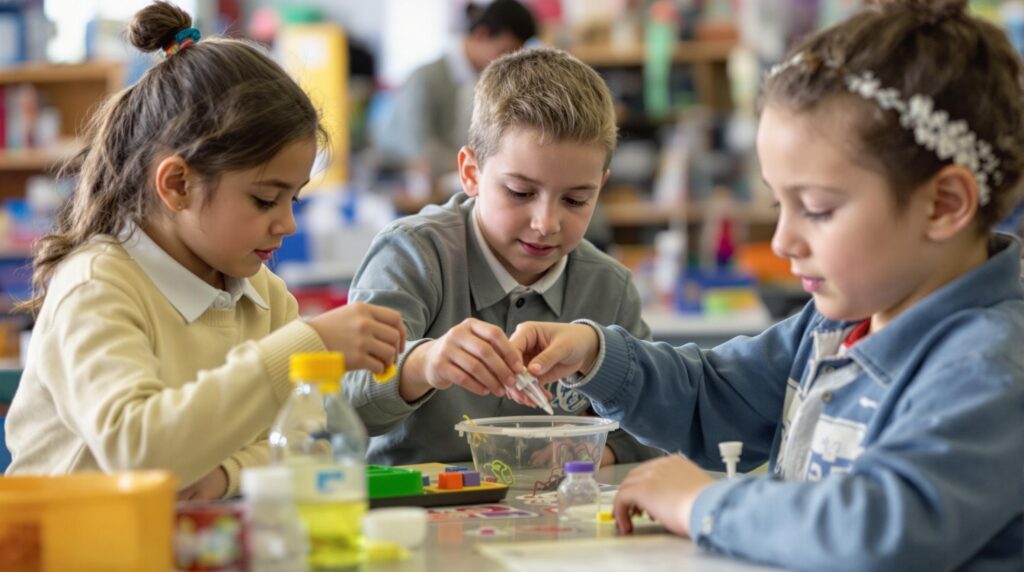Clear goo, also known as clear slime, is a fascinating polymer that’s both educational and entertaining for kids to create at home. Learning how to make clear goo provides children with hands-on experience in basic chemistry concepts while creating a stretchy, transparent substance they can play with for hours.
Key Takeaways
- Clear goo is a non-Newtonian fluid that demonstrates interesting polymer properties
- The basic recipe requires just clear glue, borax solution, and water
- Making clear goo teaches kids about chemical reactions and polymers in a fun, engaging way
- Customizing your slime with food coloring or glitter can extend the learning experience
- This activity is suitable for children of various ages with appropriate supervision
What is Clear Goo and How Does it Work?
Clear goo is essentially a homemade polymer that demonstrates fascinating scientific properties. When you mix a PVA (polyvinyl acetate) solution from clear glue with a borax solution, a chemical reaction occurs that creates cross-links between the polymer chains. This creates a semi-solid substance that flows like a liquid but can also be stretched and molded like a solid.
The science behind clear goo involves understanding polymers – long chains of molecules that can slide past each other but also become entangled. The borax acts as a cross-linker, creating connections between these polymer chains. This interaction is what gives the goo its unique physical properties that children find so intriguing.

Materials Needed for Clear Goo
Gathering the right materials is the first step in creating perfect clear goo. You’ll need just a few simple household items to get started:
- 1 bottle (4-5 oz) of clear school glue
- 1/2 cup warm water
- 1/4 teaspoon borax powder
- 1/4 cup hot water (to dissolve the borax)
- Mixing bowls (preferably clear to observe the reaction)
- Measuring spoons and cups
- Mixing utensil (plastic spoon or craft stick)
- Optional: food coloring, glitter, or other mix-ins
Safety should always come first when conducting science experiments with children. Borax is a mild irritant, so adult supervision is recommended, especially for younger children. Additionally, washing hands after handling the materials and finished goo is important.
Step-by-Step Instructions for Making Clear Goo
Creating clear goo is a straightforward process that can be broken down into manageable steps. Follow these detailed instructions for the best results:
- Pour the clear glue into a mixing bowl.
- Add 1/2 cup of warm water to the glue and stir until completely combined.
- In a separate small container, dissolve 1/4 teaspoon of borax powder in 1/4 cup of hot water, stirring until the borax completely dissolves.
- Slowly pour the borax solution into the glue mixture while stirring continuously.
- Watch as the mixture immediately begins to thicken and form into goo.
- Keep stirring until the mixture pulls away from the sides of the bowl.
- Once it’s formed, remove the goo from the bowl and knead it with your hands for a few minutes until it reaches the desired consistency.
If the goo feels too sticky, you can add a few more drops of the borax solution. If it feels too firm, a little more glue can help soften it. The key is finding the perfect balance for your preferred texture.
Troubleshooting Common Issues
Sometimes making clear goo doesn’t go as planned, but most issues have simple solutions. Here are some common problems and their fixes:
- Too sticky: Add a few more drops of borax solution and knead well.
- Too stiff: Add a small amount of water or more glue to soften the mixture.
- Not clear enough: Make sure you’re using clear glue, not white glue, and mix ingredients thoroughly to avoid cloudiness.
- Breaks easily: This usually indicates too much borax; try adding more glue to balance the recipe.
- Doesn’t form properly: Ensure your borax is fully dissolved before adding it to the glue mixture.
Remember that making goo is part science and part art – don’t be afraid to adjust your recipe as needed until you get the perfect consistency. This problem-solving process is also part of the learning experience!
The Science Behind Clear Goo: Teaching Moments
Making clear goo offers numerous opportunities to teach children about scientific concepts. When working with kids, point out these fascinating aspects:
The clear goo demonstrates properties of a non-Newtonian fluid, which means it doesn’t follow Newton’s law of viscosity. Unlike water or honey that have a constant viscosity, clear goo can act as both a liquid and a solid depending on the force applied to it.
This experiment also introduces the concept of polymers – large molecules made up of repeating subunits. The glue contains PVA polymers that are long and flexible. When borax is added, it creates cross-links between these chains, similar to how other simple chemical reactions create interesting effects.
You can extend the learning by asking questions like:
- What happens when you pull the goo slowly versus quickly?
- How does the goo flow differently than water?
- What happens if you leave the goo in a container for several minutes?
- How does temperature affect the goo’s properties?
Variations and Customizations
Once you’ve mastered the basic clear goo recipe, there are countless ways to customize your creation. Here are some fun variations to try:
- Colored clear goo: Add a drop or two of food coloring to create translucent colored slime.
- Glitter goo: Mix in fine glitter for a sparkly effect that’s visible through the clear base.
- Glow-in-the-dark goo: Add glow-in-the-dark paint to create slime that glows under blacklight or in the dark.
- Scented goo: A few drops of essential oil or vanilla extract can add a pleasant scent.
- Fluffy clear goo: Add a tablespoon of shaving cream to create a lighter, fluffier texture while maintaining some transparency.
Each variation introduces new variables to the experiment, allowing children to observe how different additives affect the physical properties of their polymer creation. This extends both the play value and the educational benefits.
Storage and Longevity Tips
To extend the life of your clear goo, proper storage is essential. Follow these practical tips to keep your goo fresh and playable for weeks:
- Store in an airtight container when not in use to prevent drying out.
- Keep away from direct sunlight and heat, which can degrade the polymer structure.
- If the goo becomes too stiff over time, kneading it thoroughly or adding a few drops of water can help rejuvenate it.
- Refrigeration can extend the life of your goo, but allow it to return to room temperature before playing with it.
- Wash hands before playing with the goo to prevent introducing dirt and oils that can break it down faster.
With proper care, homemade clear goo can last for 1-2 weeks, making it an excellent ongoing activity for curious kids. When the goo has reached the end of its lifespan, remember to dispose of it in the trash rather than washing it down the drain where it could cause clogs.
Safety Considerations and Age Appropriateness
While making clear goo is generally safe, there are a few important precautions to keep in mind:
Borax, though commonly used in household cleaning, should be handled with care. It can cause skin irritation in some people and should never be ingested. Always supervise children when handling borax and ensure they wash their hands thoroughly after making and playing with the goo.
In terms of age appropriateness, this activity works well for different age groups with varying levels of supervision:
- Preschoolers (3-5): Can participate with constant adult supervision and help with mixing and observing changes.
- Elementary age (6-10): Can help measure ingredients and follow the steps with guidance.
- Older children (11+): Can likely handle most aspects independently after being shown the process once.
For very young children or those who might be tempted to taste the materials, consider using a borax-free alternative recipe that uses cornstarch or saline solution as a safer activator.
Conclusion: Why Making Clear Goo Matters
Creating clear goo is more than just a fun activity—it’s a hands-on science lesson that introduces children to polymer chemistry in an accessible way. Through this simple experiment, kids develop an understanding of chemical reactions, material properties, and the scientific method.
The tactile nature of goo making also provides sensory benefits and fine motor skill development for younger children. For older kids, the process of troubleshooting and perfecting their goo recipe builds problem-solving skills and scientific thinking.
Most importantly, activities like learning how to make clear goo foster a love of science and discovery that can inspire further exploration. By presenting chemistry as something fun and tangible, we help children see themselves as capable scientists from an early age.



